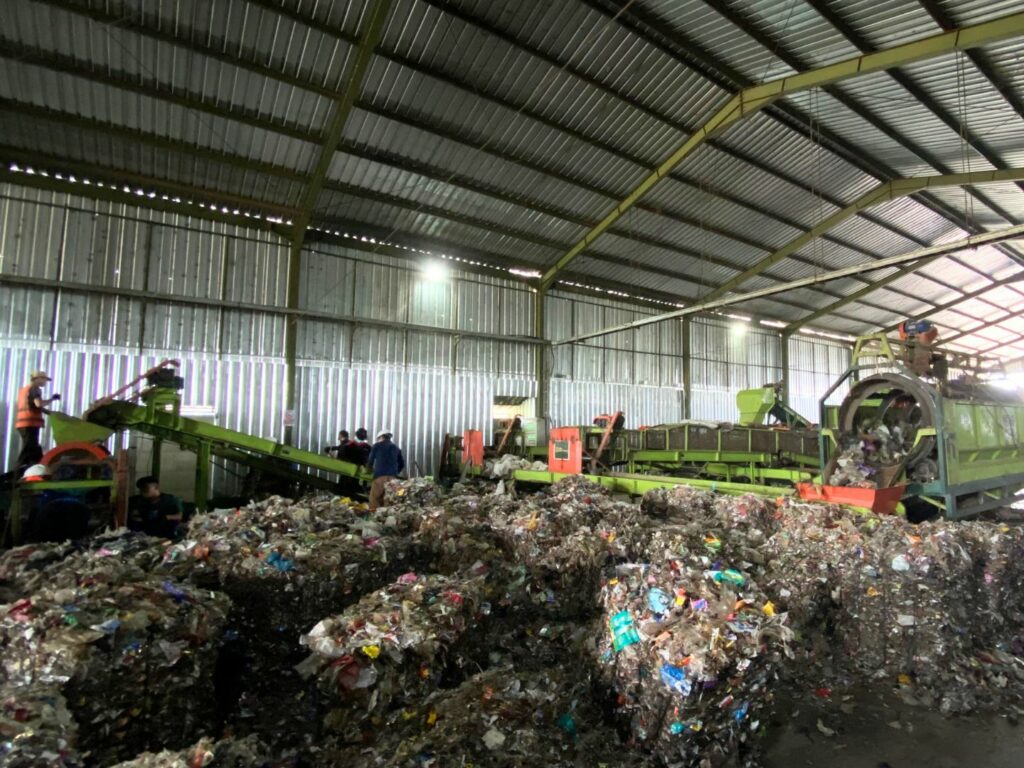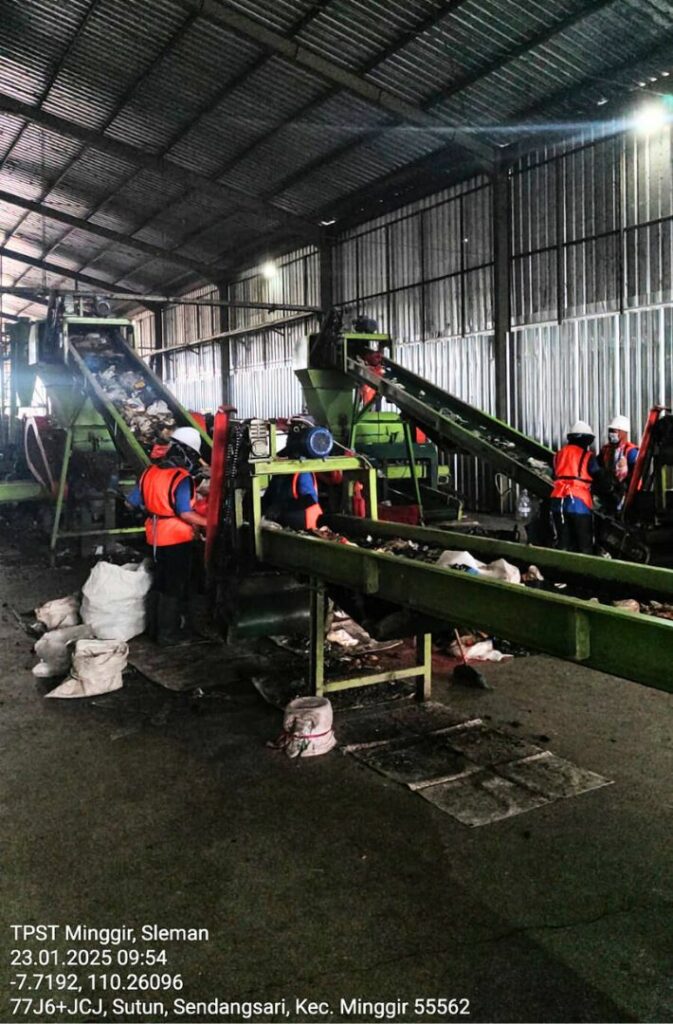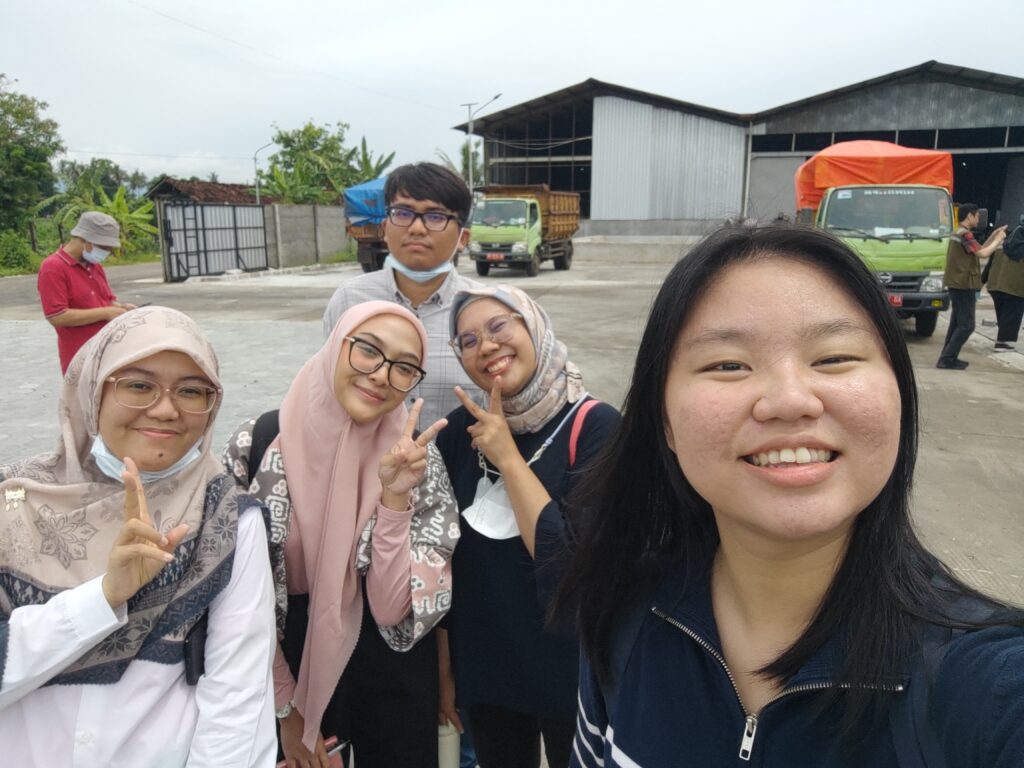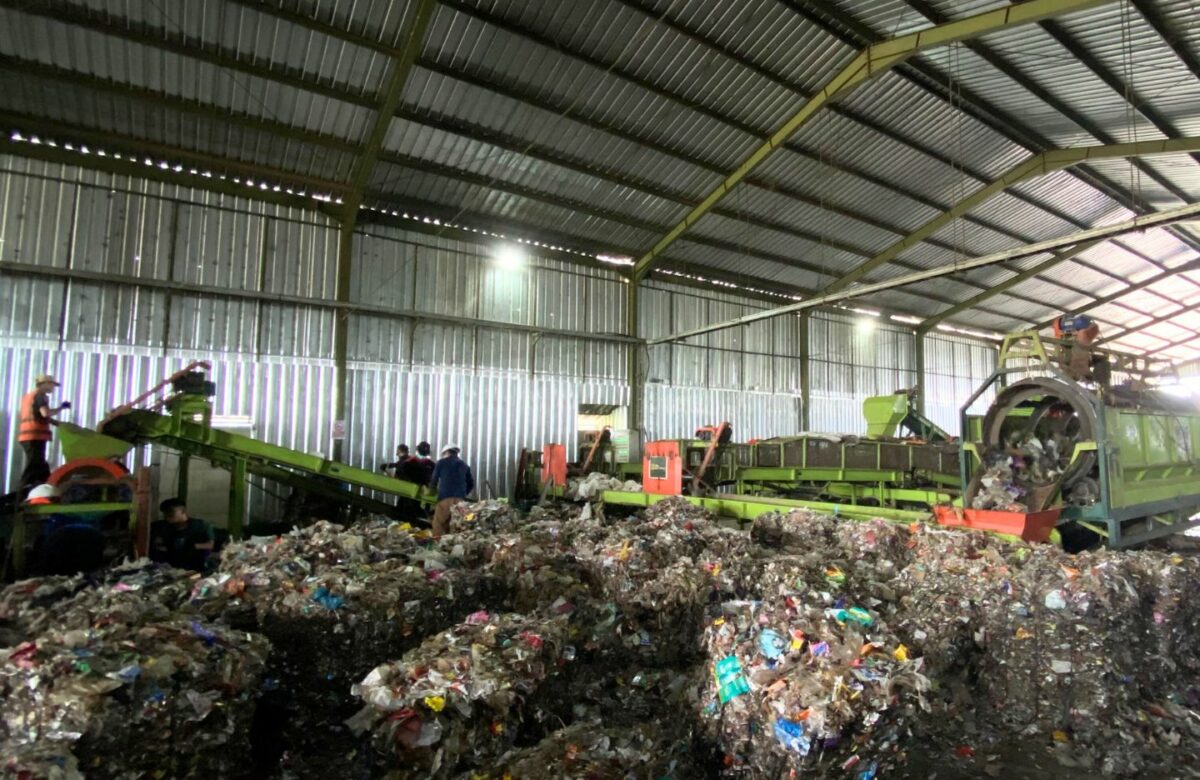In January 2025, I had the opportunity to visit four integrated waste processing sites (TPST) in the provinces of Central Java and the Special Region of Yogyakarta. Each of them used different technologies and approaches in waste management. However, from all the locations I observed, one thing that immediately stood out was TPST Minggir in Sleman, which seemed truly ready to operate sustainably.
This TPST produces Refuse-Derived Fuel (RDF), which is an alternative fuel produced from non-organic waste such as plastic, paper, and textiles that have been sorted and dried. The RDF is then sold to SBI Cilacap as an alternative energy source to replace coal.
TPST Minggir has established comprehensive best practices in all important aspects of waste management (SNI 3242:2008), such as sorting at the source, selecting efficient technology and operations, clear division of responsibilities among partners, and strong regulatory support. In my opinion, the most crucial aspects to creating a good system start with regulation, followed by financing, community participation, operational technicalities, and institutions.
Without strong and clear regulations, all other aspects will be difficult to implement. Regulations can act as a trigger that creates urgency at the community, government, and technical operator levels. With supporting regulations, financing and community participation become more directed and impactful. Then, technical and institutional support can adjust to the system’s needs based on regulations and available resources.

Indonesia is not incapable
Finding a TPST that successfully runs a structured and efficient waste management system provides hope and optimism that Indonesia is not incapable, but may just need stronger systemic support and policy backing.
What’s even more interesting is that the best practices at TPST Minggir have already been effectively applied in a local context. Currently, TPST Minggir processes waste from 17 sub-districts, including 9 that actively subscribe to the waste collection system, and processes around 20–25 tons per day from a design capacity of 40 tons per day. This is not just a pilot, but is already operating and providing services to a relatively large regional scale.


Why is it So Effective?
There are several reasons why I consider TPST Minggir to be an example of comprehensive best practices:
- Regulation: The regent issued a firm policy: “If it’s not sorted, it won’t be collected.” This is not just a slogan. Currently, 80% of the community sorts their waste at home. The Environmental Agency (DLH) also issued a circular to service providers to help educate the public. This means that the regulations are truly being enforced and have become a game changer.
- Financing: This TPST is funded by the regional budget (APBD), Solusi Bangun Indonesia (SBI) Cilacap, which acts as a steady off-taker (a party that is committed to purchasing the produced output regularly) for the RFD, and community contributions through fees. With a combination of revenue from various sources, the system becomes more financially stable.
- Community Participation: Even though there is implied regulation, the community truly participates in sorting their waste according to the guidelines at home. This makes the waste entering the TPST higher in quality, valuable, and easier to process. The impact can be seen in the technical efficiency, which is also influenced by the workers who run the system on the ground. Because the waste is already sorted from the start, it’s easier for workers sort it again, thus the workforce be optimized. The workers seem proud of what they do at the TPST, perhaps because they feel they are part of solving a major issue. Their dedication to work ensures that all the incoming waste is processed daily, with no left overs (unless they are closed/it’s a holiday, in which case they work to catch up).
- Operational Technicalities: All the equipment used was tested by the supplier, Bakti Bumi, before purchases, so there was no wasted investment. The layout design is also optimal: the output from one machine directly feeds into the next through a conveyor, eliminating the need for manual transport. As a result, only 3 workers are needed per conveyor, compared to 10–15 people at other TPSTs.
- Institutional: The supervision function is carried out by the Technical Implementation Unit (UPT), operational implementation by DLH with human resources from PT, quality control by SBI as the off-taker, and all equipment design and maintenance are handled by Bakti Bumi as the supplier. Each party has a clear role and there is no overlap.


In my opinion, the key to TPST Minggir’s success actually presents systemic solutions need to start from the strongest driving force: regulation at the local government level. When rules like “if it’s not sorted, it won’t be collected” can become a new direction for waste management in Indonesia—enforced strictly and consistently. People will be motivated to sort their waste. Waste managers also have a legal basis and incentive to only collect sorted waste. These regulations are not just something that can be made—they must come first assuring a functioning system.
So, where do we start when it comes to solid waste in Indonesia?
Start with the courage of local governments to create clear rules and the will to enforce them. When people know that only sorted waste will be collected, they will learn to adapt. When operators know they will only receive clean, valuable waste, they can operate more efficiently. A system like TPST Minggir proves that change is possible—as long as public policy is truly supportive.
Let’s go, Indonesia! We can achieve ‘zero waste to landfill’ by 2045.


